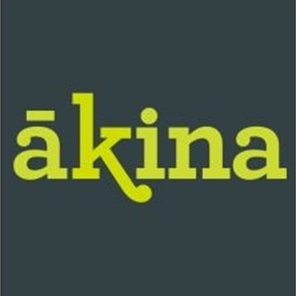The RBNZ Cuts And Signals More, Sooner. We're Now On The Same Page
- Late to hike, late to cut. The RBA finally kicked off their cutting cycle last week. The cash rate sits at 4.10%, but the hurdle is high for further rate reductions.
- The RBNZ delivered on expectations, with a 50bps rate cut to 3.75%. The OCR track was lowered, but signalled a step down in the pace of future rate cuts. Market reaction was minimal.
- Our COTW takes a look at the latest REINZ update of the Kiwi housing market. Activity remains subdued over January. House prices eked out a small gain, and sales are still on the mend.
Here’s our take on current events
It was all on for the southern hemisphere last week with both the RBA and RBNZ delivering rate cuts.
Across the ditch, the RBA’s 25bps cut was the first in their cutting cycle. But potentially their last for at least a couple of meetings with the RBA coming out uber hawkish. Caution to cut was a strong theme throughout the RBA’s statement. And the bar for further rate cuts appears high. Governor Michelle Bullock went so far as to say that market expectation of three more cuts this year is “far too confident”. There were particular concerns around global uncertainty, and even more so about the ongoing tightness of their labour market. To which, the Aussie jobs data, published days after the RBA’s move, may have only added fuel to the fire. Employment growth in January was far stronger than expected, with 44k jobs added compared to the 20k forecast. While the unemployment rate did tick up to 4.1%, this was primarily due to a higher participation rate; yet another indicator underscoring the strength of the jobs market. Demand for labour remains robust, and no doubt the RBA will be concerned that a shift to lower interest rates could further fuel that demand and stall disinflation progress.
It’s a completely different story here at home. The RBNZ delivered the 50bp cut they virtually promised us in November (see our review here). And better yet it seems like we’re all finally on the same page. Because the RBNZ lowered the OCR track again. Effectively matching market pricing and moved closer to our long-held view of a 3% terminal rate. There's only 10bps between us now. It pays to be stubborn. And we agree with the move. The RBNZ are signalling more cuts, sooner.
Here's the key dates: the OCR track implies a 25bp cut in April and May to 3.25%. And then there is a welcome drop to 3.14% to end the year. The track then flatlines at 3.1% out to 2028. That's the RBNZ's way of saying there's a 60% chance they go from 3.25% to 3%. You know, it's kind of needed, but we’re not quite there yet. In time, they should get to 3%. And the risks are to the downside.
We must point out that a 3.75% cash rate remains well above estimates of neutral - which are close to 3%. So, interest rates remain at levels that restrain demand. And after a severe recession, it's hard to justify. We have rising unemployment and inflation rangebound near target. Job done. Release the brake and put it in neutral. If anything, the RBNZ may need to stimulate, by putting the economy in drive, tapping the accelerator, and cutting below 3%.
The REALLY good news is that RBNZ has tamed the inflation beast. And it’s time to drag the economy out of recession. With more interest rate cuts on the way, we see the economy recovering in 2025. Rate cuts are feeding through fast, with 81% of mortgages fixed for less than a year. That points to a firmer recovery in the second half of 2025. Along with gains in the housing market. And of course, 2026 is looking better than 2025, which will be a lot better than 2024.
Chart of the Week: A housing recovery awaits.
Potentially lost in the noise of the Reserve Banks rate cuts, we also saw the latest REINZ housing data last week. Seasonally adjusted, house prices were up 0.2% over January, marking the third consecutive month of positive, albeit small, gains. But compared to their November 2021 peak, house prices are still down around 15%. Sales, despite some monthly volatility continue their slow upwards trajectory. Compared to last year sales were up 17.5%. Meanwhile listings and stock levels hit decade-high over the month. For now, things are still sluggish on the ground. But we’re hopeful for housing this year as lower interest rates spark life back into the market. Especially now that the RBNZ’s have signalled more rate reductions and potentially a move towards 3% this year. Our view remains - we expect to see house price growth of about 6% this year.

Special Topic: Tariffs and the NZ economy.
Beyond the RBNZ's rate cut and updated forecasts, their special topic on the implications of global tariffs on Aotearoa certainly grabbed our attention. It's become a key issue in many of the conversations we're having with businesses and clients, and it's undoubtedly a challenging one to address. Our usual response centres around the fact that it's still too early to draw firm conclusions. But as history reminds us, tariffs and trade wars are negative for economic growth and carry inflationary implications. At present, the trajectory of rising tariffs is leaning toward a higher near-term inflation outlook, domestically. Particularly given the weakness of the Kiwi dollar against the strength of the USD. However, with the landscape constantly evolving, the timing and magnitude of further changes remain uncertain, and the true impact is yet to be realized. But we thought the RBNZ visually summed up the possibilities quite nicely in the table below.



 Grocery Action Group: Action On Supermarkets Welcomed
Grocery Action Group: Action On Supermarkets Welcomed NIWA: Marine Biosecurity Watch At Port Taranaki
NIWA: Marine Biosecurity Watch At Port Taranaki Commerce Commission: ComCom Moves Closer Towards Deregulating Mobile Termination
Commerce Commission: ComCom Moves Closer Towards Deregulating Mobile Termination MOTAT: MOTAT’s Te Puawānanga Science And Technology Centre Shortlisted For International Exhibition Of The Year
MOTAT: MOTAT’s Te Puawānanga Science And Technology Centre Shortlisted For International Exhibition Of The Year WorkSafe NZ: Fraudulent Asbestos Removals Catch Up With Industry Veteran
WorkSafe NZ: Fraudulent Asbestos Removals Catch Up With Industry Veteran EMA: EMA Welcomes Increase In Health And Safety Inspectors
EMA: EMA Welcomes Increase In Health And Safety Inspectors



